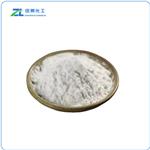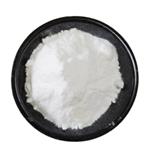Chemical Properties
Ammonium molybdate is a colorless, white or slightly greenish-yellow powder. It is used in chemical analysis for the determination of phosphorus. From a nitric acid solution it precipitates phosphorus in the form of ammonium phosphomolybdate having the formula (NH4)3PO4-12MoO3 after drying at 110 °C(230°F). Some of the phosphomolybdic acids are used as reagents for the alkaloids and in the analysis and separation of the alkali metals.
Uses
Ammonium molybdate has been used to prepare phosphomolybdates. (NH4)2MoO4 was used as an analytical reagent for quantitative analysis of phosphates, silicates, arsenates and lead in their aqueous solutions. At saturated concentration, (NH4)2MoO4 was used to perform cryo-negative staining and as a negative stain in biological electron microscopy. Ammonium molybdate was used in study of crystallisation of cell-free-expressed membrane proteins.
Production Methods
Pure molybdic oxide (99.95% MoO3) is prepared by sublimation of technical oxide or by calcining ammonium molybdate. Metallic molybdenum powder is prepared commercially by hydrogen reduction of either pure molybdic oxide or ammonium molybdate in a two-step process.
Definition
ChEBI: Ammonium molybdate is an ammonium salt composed of ammonium and molybdate ions in a 2:1 ratio. It has a role as a poison. It contains a molybdate.
General Description
Ammonium molybdate can be prepared by dissolving molybdenum trioxide in ammonia.
Flammability and Explosibility
Not classified
reaction suitability
reagent type: catalyst
core: molybdenum
Safety Profile
Poison by ingestion and
intraperitoneal routes. Moderately toxic by
other routes. An irritant. See also
MOLYBDENUM COMPOUNDS. When
heated to decomposition it emits toxic
fumes of NH3 and NOx.
Potential Exposure
It is used as an analytical reagent, in
pigments and in the production of molybdenum metal and
ceramics.
Shipping
There are no known UN/DOT restrictions.
Purification Methods
Crystallise the salt from water (2.5mL/g) by partial evaporation in a desiccator. [Sturdivant J Am Chem Soc 59 630 1937, Grüttner & Jauder in Handbook of Preparative Inorganic Chem (Ed. Brauer) Academic Press Vol II p 1711 1965.]
Incompatibilities
Incompatible with oxidizers (chlorates,
nitrates, peroxides, permanganates, perchlorates, chlorine,
bromine, fluorine, etc.); contact may cause fires or explosions.
Keep away from alkaline materials, strong bases,
strong acids, oxoacids, epoxides; chemically active metals
(such as potassium, sodium, magnesium and zinc) may
cause a violent reaction.




